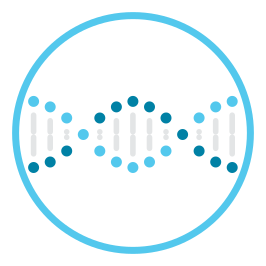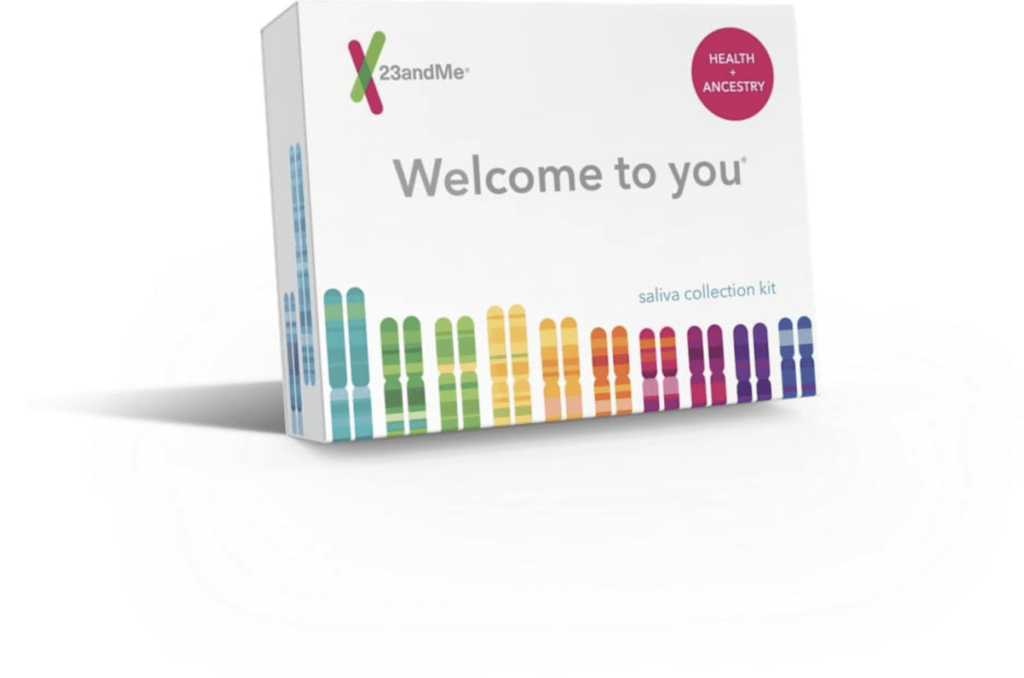Explore Parkinson’s Disease and what your DNA can tell you
Genetics of Parkinson’s disease risk
Risk for Parkinson’s disease is influenced by genetics. In fact, the disease is associated with genetic variants (differences) in many genes. Two of the best studied genes associated with Parkinson’s disease are called LRRK2 and GBA (also known as GBA1). There are other genes and variants that have also been linked to Parkinson’s disease, but most of these genetic variants are either rare or have only a small effect on risk.

Other factors that may cause an increased likelihood of Parkinson’s disease
Other factors besides genetics can influence someone’s chances of developing Parkinson’s disease, including:
- Age: The risk of developing Parkinson’s disease increases as a person ages.
- Sex: Males have a higher chance of developing Parkinson’s disease than females.
- Family history: First-degree relatives of an individual with Parkinson’s disease have a higher chance of developing Parkinson’s disease.
- Exposure to certain chemicals increases the risk of developing Parkinson’s disease.
Consult with a healthcare professional before making any major lifestyle changes.
Find out if your genetics might increase your likelihood of developing Parkinson’s disease
You can learn whether you may have an increased risk of developing Parkinson’s disease based on your genetics through the 23andMe Parkinson’s Disease Genetic Health Risk report*. The report looks at two specific genetic variants associated with Parkinson’s disease, one in the LRRK2 gene and one in the GBA gene. This report is included in the 23andMe Health + Ancestry Service.

Health + Ancestry Service
*The 23andMe PGS test uses qualitative genotyping to detect select clinically relevant variants in the genomic DNA of adults from saliva for the purpose of reporting and interpreting genetic health risks. It is not intended to diagnose any disease. Your ethnicity may affect the relevance of each report and how your genetic health risk results are interpreted. Each genetic health risk report describes if a person has variants associated with a higher risk of developing a disease, but does not describe a person’s overall risk of developing the disease. The test is not intended to tell you anything about your current state of health, or to be used to make medical decisions, including whether or not you should take a medication, how much of a medication you should take, or determine any treatment. The Parkinson’s Disease genetic health risk report is indicated for reporting of the G2019S variant in the LRRK2 gene, and the N370S variant in the GBA gene and describes if a person has variants associated with an increased risk of developing Parkinson’s disease. The variants included in this report are most common and best studied in people of European, Ashkenazi Jewish, and North African Berber descent.
References
Cook Shukla L et al. (2004). “Parkinson Disease Overview.” [Accessed Aug 25, 2020].
Mayo Foundation for Medical Education and Research. “Parkinson’s disease.” Mayo Clinic. Retrieved March 11, 2019, from https://www.mayoclinic.org/diseases-conditions/parkinsons-disease/symptoms-causes/syc-20376055.
National Institute of Neurological Disorders and Stroke. (2024). “Parkinson’s Disease.” Retrieved July 31, 2024, from https://www.ninds.nih.gov/Disorders/All-Disorders/Parkinsons-Disease-Information-Page.
The Michael J. Fox Foundation for Parkinson’s Research. “Parkinson’s 101.” Retrieved July 31, 2024, from https://www.michaeljfox.org/parkinsons-101?navid=understanding-pd.
U.S. National Library of Medicine. (2020). “GBA1 gene.” MedlinePlus.
U.S. National Library of Medicine. (2020). “LRRK2 gene.” MedlinePlus.
U.S. National Library of Medicine. (2020). “Parkinson’s Disease.” MedlinePlus.
Xu et al. (2010). “Physical activities and future risk of Parkinson disease.” 75(4):341-8.